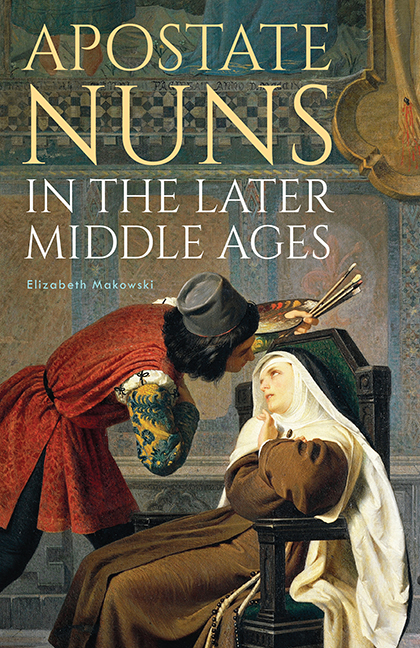Book contents
- Frontmatter
- Contents
- Preface
- Acknowledgements
- List of Abbreviations
- Introduction
- Part I The Vowed Life
- Part II Casting Off the Habit of Religion
- Part III Prodigals Return
- 5 Penitents and Penalties
- 6 Recidivists and Renegades
- Conclusion
- Bibliography
- Index
- Other volumes in Studies in the History of Medieval Religion
6 - Recidivists and Renegades
from Part III - Prodigals Return
Published online by Cambridge University Press: 18 September 2019
- Frontmatter
- Contents
- Preface
- Acknowledgements
- List of Abbreviations
- Introduction
- Part I The Vowed Life
- Part II Casting Off the Habit of Religion
- Part III Prodigals Return
- 5 Penitents and Penalties
- 6 Recidivists and Renegades
- Conclusion
- Bibliography
- Index
- Other volumes in Studies in the History of Medieval Religion
Summary
This final chapter is devoted to apostate nuns whose return to monastic life was compromised either temporarily or permanently. The peripatetic and persistent reformer Johannes Busch once again provides us with the first, and the most colorful, story of such a woman – Sophie, daughter of Duke William of Brunswick and Lüneburg, Lower Saxony. Sophie had been professed in magnificent ceremony at the unreformed Cistercian monastery of Mariensee, where she had then lived for years as a lukewarm follower of an undemanding routine. As if to provide an object lesson in the route taken by temptation in such lax circumstances, an unscrupulous chaplain assigned to provide spiritual care for the nuns found the lovely young Sophie a prime candidate for deception. He slept with her on many occasions in the monastery itself and she sometimes crept away to meet him in his own rooms.
When Sophie became pregnant, her lover counseled her to don men's clothes (Busch itemizes the apparel: trousers, cloak, boots, and even arrows in a quiver), make her escape by night, and meet him in a nearby forest. After spending three days and two nights together, he left Sophie on the pretext of getting more supplies, and never came back. Finally realizing that he was not going to return for her and fearing what her father and brothers would do if they discovered her plight, she made her way to a neighboring district where she took refuge with a woman who let her stay until the birth of her child. Afterwards, however, Sophie was returned to Mariensee and imprisoned, either as penance for her apostasy or because the community realized that she had not come back willingly. In these harsh circumstances, continually tempted and convinced that she could no longer observe monastic discipline, she decided to hang herself in her cell using her nightshirt as a noose.
Only the chance intervention of the priest who was celebrating Mass at the monastery that day saved Sophie from suicide and won her freedom from prison, a freedom which she soon used to put her salvation on an even more fragile footing. Escaping from Mariensee, she proceeded to spend more than seven years wandering from this city and town to the next and taking lovers along the way.
- Type
- Chapter
- Information
- Apostate Nuns in the Later Middle Ages , pp. 159 - 182Publisher: Boydell & BrewerPrint publication year: 2019

